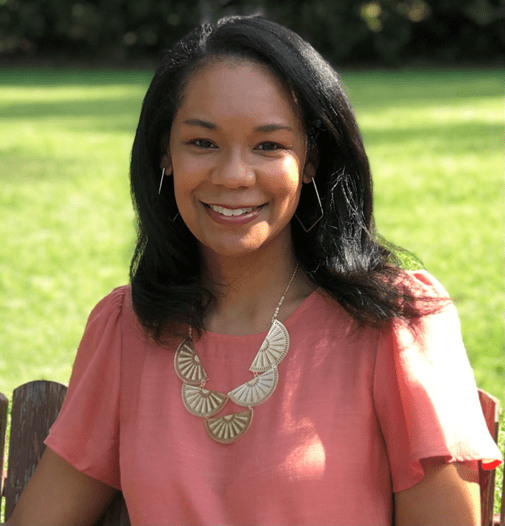Parents and caregivers can face deep uncertainty because of the instability and complexity of today’s political and societal landscape. The “One Big Beautiful Act” passed in July 2025 will have far-reaching impacts on the mental health of children and youth across the country. In fact, the $1 trillion in cuts to Medicaid will impact more than 37 million young people, particularly those living in rural and urban communities.
Despite the damage this Act will have on the daily lives of millions, as parents we know we have work to do today. We also know that family support is a key protective factor that can help young people grow to reach their fullest potential in the face of risk factors.
As the “Taking Care of Ourselves” article discussed, to fully support your young person, you must “put your own oxygen mask on first.” That is, have a plan to actively support your own mental, emotional, spiritual, and physical health so that you can sustain support for others in healthy ways.
Three ways to support your young person in challenging times
1. Create a space for open-ended conversation.
Find a time and space where you can chat and not feel rushed. Perhaps it’s face-to-face or over the phone. Let your child or young person know you want to check in and see how they’re doing. Open-ended questions that invite discussion can be a helpful way to start. For example:
- “How are things going on campus?”
- “How do you like your new classes this semester?”
- “What’s new with your friends?”
It can also be helpful to acknowledge there is a lot going on in society, and to model vulnerability by sharing your feelings. Consider asking young people if they’re seeing changes in attitudes or behaviors on their campus or at school, and then use supportive statements that validate their experience to keep the conversation flowing.
Example conversation starter
“Hey, I wanted to check in with you about a few things. I know there’s a lot going on these days with the political and social climate, and in the world in general. There are some potential changes that may end up having a significant impact on our family and community. I have a lot of concerns about the direction things seem to be going, but right now there is a lot we don’t know. I know you have a lot on your plate, and many other things you are probably thinking about (school, work, friends, etc). But I want to open a space for us to talk about how you’re feeling and what your thoughts are about all that is going on. I may not have all the answers, but I’m here, and we’re going to get through this together.”
Your young person may respond by opening up and sharing what’s on their mind, or they may not. Either way, letting them know you care and are available is what matters.
| A personal example: Talking feelings, politics, and family with two teens
On New Year’s Day, my family gathered at my parents’ house as we typically do. We celebrate not only the new year, but also our African American heritage, with our traditional dinner including collard greens and black-eyed peas and a celebration of the last night of Kwanzaa. During our ride home, my oldest daughter commented with some annoyance that our conversation at dinner didn’t delve as deeply into politics as it usually would, especially given the upcoming change of administration. While some families make it a point to avoid politics, my family is very politically engaged and generally on the same page when it comes to beliefs and opinions. Our large family dinners often include in-depth conversations about what is going on and how we feel about it. So, my daughter’s observation about the lack of such conversation was appropriate. She went on to say that she had a hard time understanding why it wasn’t at the top of everyone’s minds and asked, “Can we talk about politics? It’s really bothering me and I want to be able to talk about it.” My younger daughter, who was sitting next to her said, “Well, I don’t want to talk about it right now — it’s bothering me. Thinking about it makes me feel overwhelmed and anxious.” She put her earphones over her ears and turned on her music. My husband and I worked to honor both of our daughters’ requests and needs. When we got home, our younger daughter went up to her room. We sat down on the couch with our older daughter and asked her to share how she was feeling. She expressed frustration that the older members of the family seemed to want to focus on lighter topics at dinner at a time when the political reality is quickly shifting in a direction that could have dramatic effects on her life, rights, and opportunities as a young person of color heading to college next year. After listening to her and validating her points, we thanked her for telling us how she felt, and encouraged her to bring up the conversation at future family gatherings. We assured her that protecting her well-being as she makes her way in the world is the greatest concern we have as a family. We shared that, like her sister, other members of the family may have felt a need that evening to disengage from heavy topics and instead be fully present in to the joy of being together as a way of protecting their peace. We agreed both approaches are healthy — facing the concerns directly and disengaging to protect your peace when it feels too emotionally overwhelming. Both have their place in managing the stress of living in uncertainty. After talking with our oldest daughter, I checked on our youngest who seemed content, listening to music on her bed and reading. Sitting down on her bed I said, “Hey, I know you said that thinking about politics is making you anxious and you don’t want to talk about it right now. That’s totally fine. Your sister really wanted to talk about it tonight, but it’s okay that you didn’t. I just want you to know that it’s completely normal for you to feel the way you do, I feel that way myself, and at any point that you want to talk about it, I’m here.” We didn’t go deeper, but she acknowledged what I said with a nod and said, “Okay.” Her acknowledgment let me know she heard me and that the door was open for us to talk when she was ready. |
2. Facilitate opportunities to build empowerment.
Perhaps the greatest challenge in times of uncertainty is feeling a loss of control. The antidote to helplessness and hopelessness is empowerment. To be empowered means to recognize that you have agency and to use that agency in productive ways.
Help your young person identify ways to play an active role in “being the change” they want to see. For example, they can:
- Join an existing organization or start a club with like-minded students focused on the causes they care about.
- Learn about the political process and how it affects them.
- Study important movements of the past, such as the Civil Rights movement and other nonviolent resistance movements in countries where people have worked together to resist and overcome oppression.
- Express their convictions creatively, through song, spoken word, art, writing, or dance.
- Engage in therapy to find a safe space to talk through the impact of societal stressors on top of the stressors of daily life and relationships.
- Create a plan to stay safe and communicate with others in the event of an emergency or other destabilizing event. While it may seem anxiety-provoking to talk about, being able to articulate a plan for worst-case scenarios can reduce worry, provide a sense of control, and help everyone to feel on the same page.
3. Use journaling to turn worries into action steps.
Finally, here are some journaling prompts to help you and/or a young person process your thoughts and feelings, and eventually formulate action plans. Consider sharing these with your young person and encourage them to write their responses in a notebook, laptop, phone or whatever is easy for them. A follow-up discussion may also be an effective way to keep the conversation going and to provide support.
- What is my greatest worry in this situation?
- Realistically, how likely is this to happen?
- What can I do now to prepare myself in the event of a worst-case scenario?
- What strengths do I have that will help me be resilient in the face of this challenge?
- What family, community, cultural, and/or spiritual resources can I look to for support?
Family Corner Resources
The Steve Fund is continuing to partner with schools, families, and communities to make sure that young people, especially the most vulnerable, are seen, supported, and not overlooked. We have created a robust suite of resources to support you and your young people, including:
- Acknowledging the Challenges of this Moment
- Family Mental Health Journals – interactive workbooks for families to use to explore and support mental health and well-bring
- My Digital Sanctuary – resources for young people
- The Family Corner – resources for parents and caregivers
- Family Journals – support you and your young people in creative, discussion-based activities
- Back in School Toolkits – support your young person (and yourself) during the school year
- #MySafeSpace Campaign – join the campaign, share your story, and learn with others

